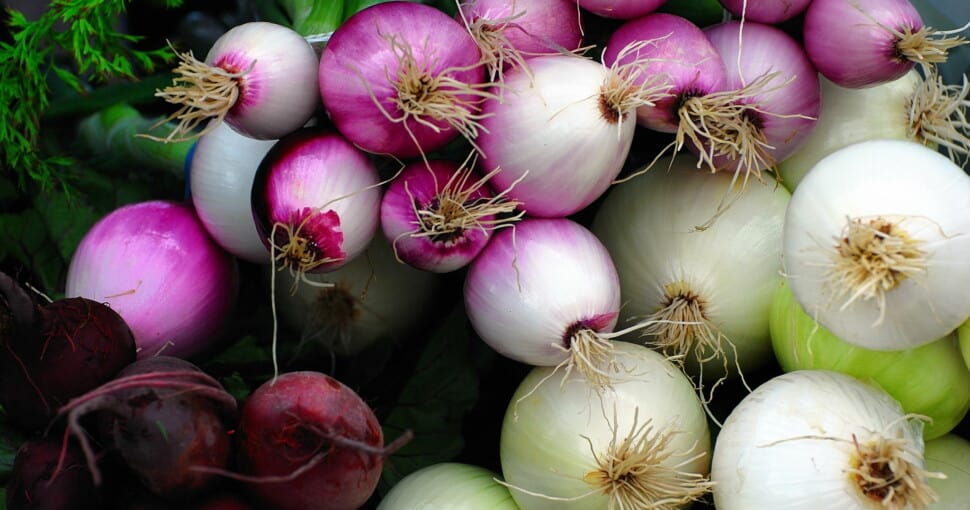The common onion (Allium cepa) is a well-known vegetable in most households worldwide. Onions have many uses and are often used to flavor savory dishes. Onions are hardy plants, identified by their long, green leaflets and flower bulbs.
Contents
The flower stalks of onions can grow up to 6 feet high and produce a cluster of small, white flowers. The flowers also produce seeds that are used for reproduction. All parts of the onion plant are edible, although the bulb is the most sought-after plant. It is valued for its sweet and spicy flavor.
Despite many ways to identify the onion plant, many other plants, edible and inedible, resemble the onion. Plants that look like onions include:
- Egyptian onions (walking onions) – the plant looks precisely like onions
- Chives – the stems and leaves look like smaller, thinner onion leaves
- Garlic – the plant looks exactly like an onion
- Leeks – look like oversized onion plants
- Ramps – the plant looks like onions or leeks
- Shallots – the plants look exactly the same
- Death Camas – the leaves look like onion leaves but are drier
- Potato Onions – the leaves look like onion leaves
If you are curious to know how these plants relate to onions and how they are similar and different from onions, continue reading. You’ll see how these plants look like onions and how you can tell them apart, too.
1. Egyptian Onions (Allium x proliferum)
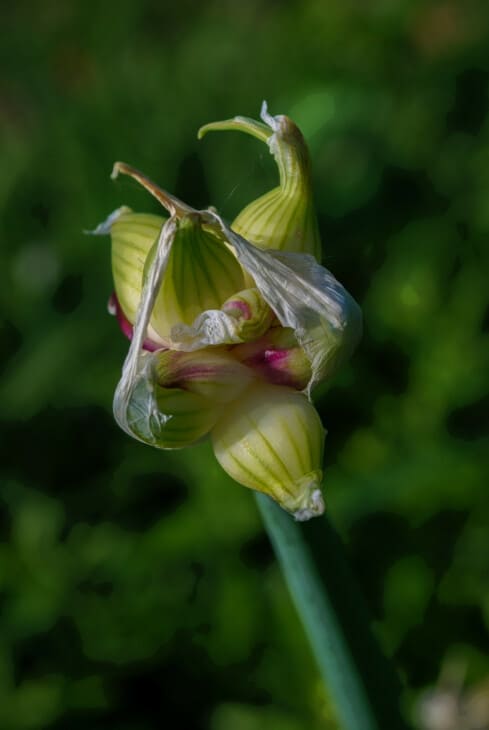
Egyptian onions, also known as walking onions, are closely related to common onions. Both plants are part of the Allium family and resemble each other. Egyptian onions look like common onions, as they have the same leaf structure and color as onions.
Egyptian onions also create edible bulbs, but they are mostly planted for their oniony stems. The best way to distinguish between Egyptian onions and common onions is to investigate their flower bulbs. Common onions produce small, white flowers that spread seeds.
Egyptian onions produce bulbs (that look like tiny onions) instead of flowers. The bulbs fall to the ground to reproduce instead of creating seeds. Egyptian onions, like common onions, are edible. They are often used in cooking.
2. Chives (Allium schoenoprasum)
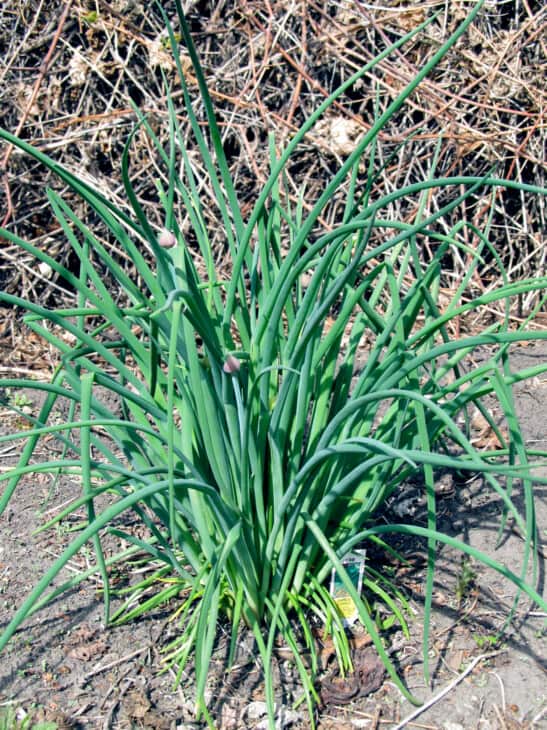
Chives are another plant that resembles the common onion. Chives have a remarkably similar aroma to onions, and their long, green stalks look like onions too. Chives also produce flower stalks that reach about 15 inches in height. In addition, chives have slim, green stems about the same color as onion stems.
The biggest visual difference between onions and chives is that chives are much smaller than onions. Chives are primarily harvested for their leafy stems, but their slender bulbs are also used in cooking. Chives have purple flowers, whereas onions produce white flowers.
Chives have a similar smell to onions. Therefore, one can easily mistake them for a small onion plant based on their aroma. These plants help deter unwanted insects such as aphids.
3. Garlic (Allium sativum)
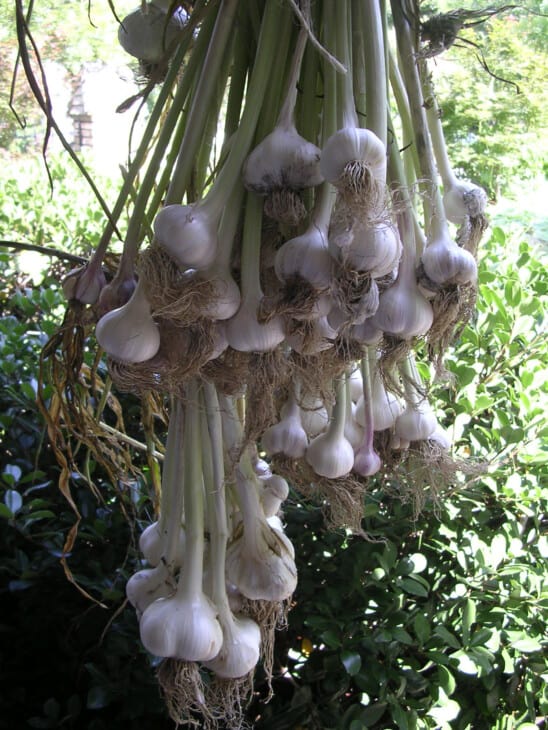
When thinking about bulbous vegetables, you cannot skip over garlic. Garlic may not taste like onion, but the plants look pretty similar. Garlic plants have the same long, straight stems as onions, though they might be lighter green. Garlic plants grow about 24 inches tall, making them a bit smaller than onions.
Garlic plants have a woodier stem at the bottom, whereas an onion’s stem remains soft and pliable. In addition, garlic flowers are purple, whereas onions have white flowers. And, of course, garlic bulbs are segmented, whereas an onion produces a single bulb.
Garlic plants have a signature garlicky smell, though you may not recognize the smell of a garlic plant when you cannot compare it to an onion. Fortunately, garlic plants are edible and often used in cooking, at least as often as onions.
4. Leeks (Allium ampeloprasum)
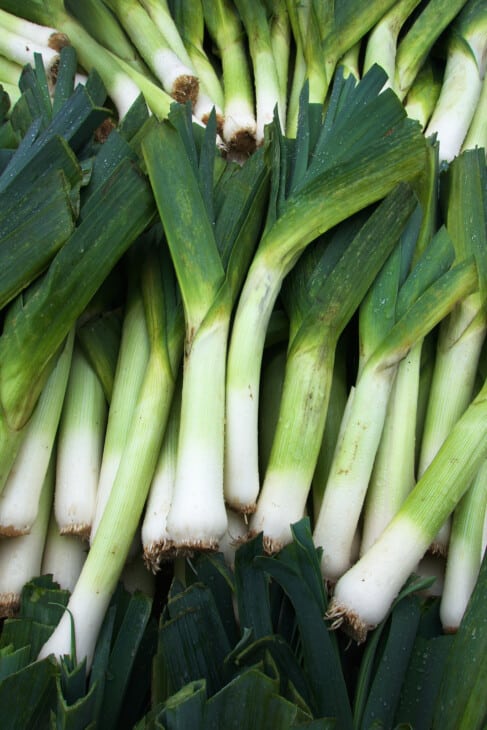
Another onion lookalike is a leek. Leeks are green, woody plants with long, green stems. The tops of leeks are dark green and fibrous, leading to a lighter green stem and a white base. While the color of a leek is similar to an onion, the leek plant is broader and overall bigger than an onion, and looks more like cabbage.
Some people describe leeks as being overgrown onions. Leeks have a milder taste and aroma than onions, though you may pick up on an oniony smell when working with leeks. Leeks don’t produce bulbs like onions and are instead harvested for their leaves.
Leeks reproduce with seeds, just like onions. The flowers of leeks can be white or purple, which makes it easier to mistake leeks for onions, especially when they are still small.
5. Ramps (Allium tricoccum)
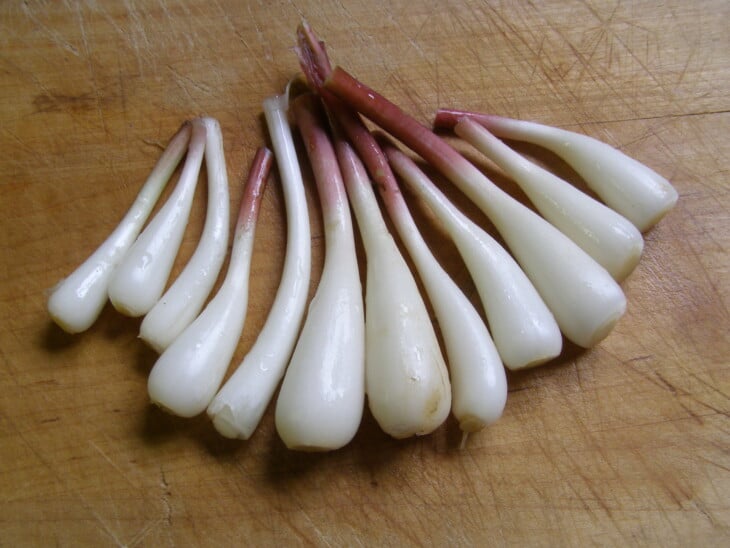
Ramps are yet another plant with an onion lookalike. Ramps are a wild onion variety. They have a milder taste than onions, and the entire plant is usually harvested and eaten. Ramps look more like chives than onions since they are smaller and smoother than onions. They have broader, dark green leaves, though.
Sometimes the leaves have a purple outline. The leaves run down to the stem, where a small, elongated bulb awaits. Ramp bulbs get smaller than onion bulbs, which is why they aren’t harvested only for the bulbs.
Ramps are often sauteed and eaten whole. Although they don’t look like onions, they have a mild onion flavor and are often used for cooking savory dishes.
6. Shallots (Allium cepa)
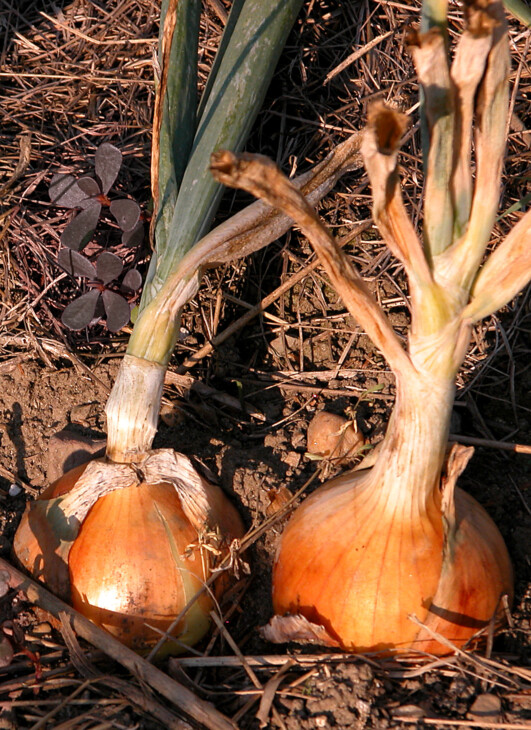
Shallots are also from the same family as onions, and the two vegetables look remarkably similar. Shallots look like thin, long onions. They grow on plants that look identical to onions except that they are slightly smaller than onions.
The leaves and stems of shallots are also a bit thinner and a bit lighter in color than onions. Like garlic, shallots grow in clusters under the soil. However, they don’t form large, singular bulbs like onions. Shallots are often used in cooking, as they have a milder taste than onions.
Although they share a flavor profile similar to onions, many prefer shallots because they aren’t as spicy as onions.
7. Death Camas (Toxicoscordion venenosum)
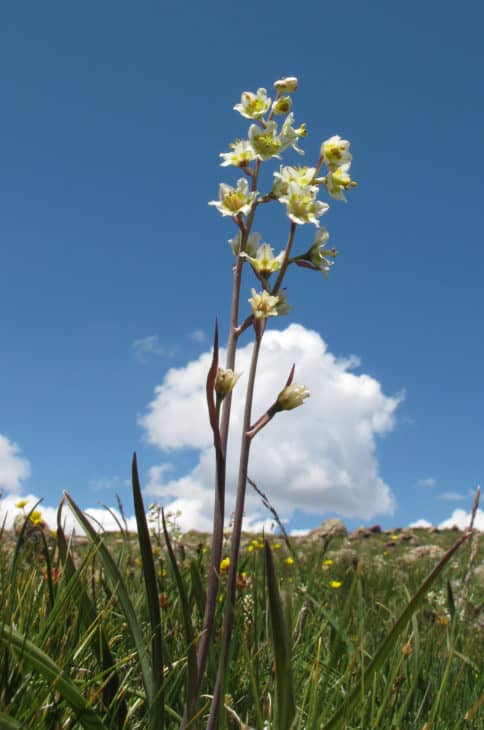
Death camas, or death lilies, are another plant one can mistake for onions. Death camas look exactly like onions and grow about 2 feet tall. Death camas have long, green stems with a white coating resembling onions. Death camas also produces white flower bulbs that make them look even more like onions.
Despite their appearance, though, death camas are poisonous. All parts of the death camas are toxic, and ingesting even a small part of the plant (such as a bulb or two) can be fatal for humans or animals. In addition, death camas closely resemble onions, so it’s easy to mistake the former for onions.
The only way to distinguish between death camas and onions is to smell them. Death camas may look like onions but don’t share their signature smell. If you don’t even smell the faintest hint of onion on the plant, it is likely a death camas.
8. Potato Onions (Allium cepa var. aggregatum)
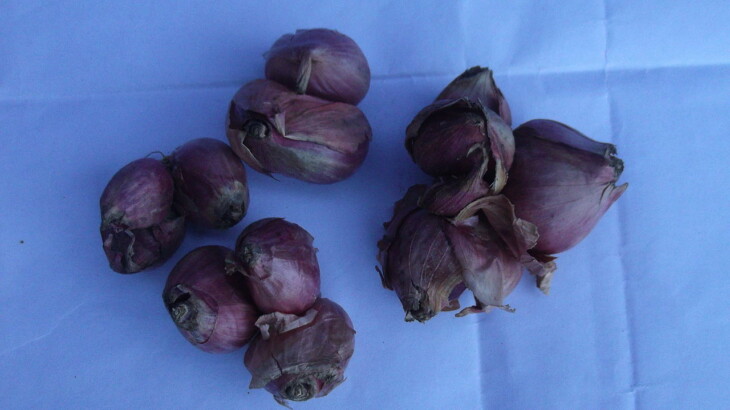
Another part of the onion family is the potato onion. Potato onions are another type of onion, though they aren’t the same variety. Potato onions (var. aggregatum) look precisely like onions, except for the bulbs.
Where common onions form only one bulb per plant, potato onions produce several. They grow beneath the soil in bunches, like potatoes, where the name is derived. Potato onions taste like onions but are slightly sweeter than common onions.
Like onions, potato onions are edible and often used in cooking to make savory dishes.

